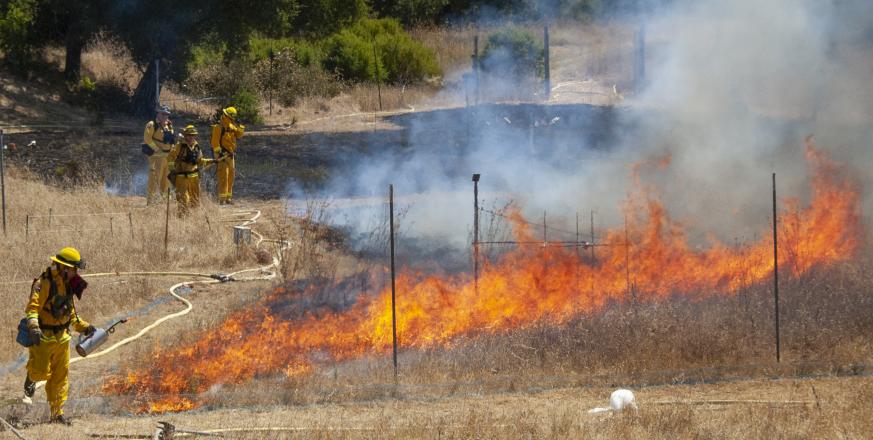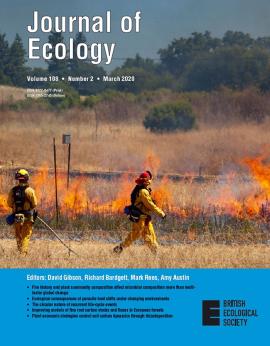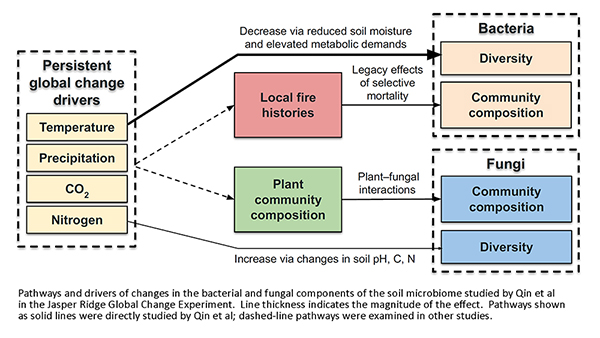Fire history and plant community drive changes in soil microbiome, outweighing global change factors

A new Jasper Ridge paper examines the changes in soil bacteria and fungi—two major components of the grassland soil microbiome—under long-term global change treatments and disturbance by fire. Lead author Clara Qin ’15, MS’16 conducted the research as part of an undergraduate honors thesis, advised by professor Kabir Peay. The paper was selected as the editor’s choice for the March 2020 issue of the Journal of Ecology and was featured on the journal cover.

Qin’s research took place within the long-term Jasper Ridge global change experiment (JRGCE) which was designed, in part, to test the role of the soil microbiome in driving the response of natural ecosystems to global environmental change. Soil microbes have many roles as decomposers, plant symbionts, or plant pathogens; they carry out a multitude of biogeochemical processes; and their enormous diversity—even within a single ecosystem—can account for a wide range of rates and pathways of nutrient cycling and organic matter respiration, as well as interspecific processes including symbiotic activity and pathogenicity . Just as the microbiome of the human gut may regulate many aspects of human health, the soil microbiome may be key to many ecosystem properties.
In 2003 (year 4 of the JRGCE), a wildfire burned a quarter of the field experiment (2 blocks comprising 8 plots, or 32 experimental quadrants). For the next three years, soil biogeochemistry differed between burned and unburned areas. For example, in burned plots, soil microbes released double the amount of the greenhouse gas N2O as in unburned. Two long-term global change treatments (elevated CO2 and nitrogen deposition) amplified the effect of fire.
To further probe the effects of fire with better replication and control, in 2011 the JRGCE conducted a prescribed burn in each of four blocks representing half of the experiment (the two blocks that burned in 2003 and another two that did not). Three years later, Qin sampled soil throughout the experiment and analyzed the soil microbiome using high-throughput amplicon sequencing, a technique that was not available in the early years of the JRGCE. She found that bacterial community composition was best explained by exposure to fire in both 2003 and 2011. The 2011 burn alone did not significantly alter the bacterial community, suggesting a legacy effect in which recurrent fires lock in a community change. Fungal community composition was best explained by plant community composition. The long-term global change treatments had some effects on the soil microbiome—fungal richness was higher under elevated nitrogen deposition, and bacterial diversity was lower in warmed plots—but the effects of fire history outweighed them.
 In addition to the cover photo by Philippe Cohen, the journal featured the JRGCE prescribed burn in a cover story about the planning and execution of the burn.
In addition to the cover photo by Philippe Cohen, the journal featured the JRGCE prescribed burn in a cover story about the planning and execution of the burn.
Qin C, Zhu K, Chiariello NR, Field CB, Peay KG. Fire history and plant community composition outweigh decadal multi-factor global change as drivers of microbial composition in an annual grassland. Journal of Ecology 2020; 108:611-625. https://besjournals-onlinelibrary-wiley-com.stanford.idm.oclc.org/doi/full/10.1111/1365-2745.13284



